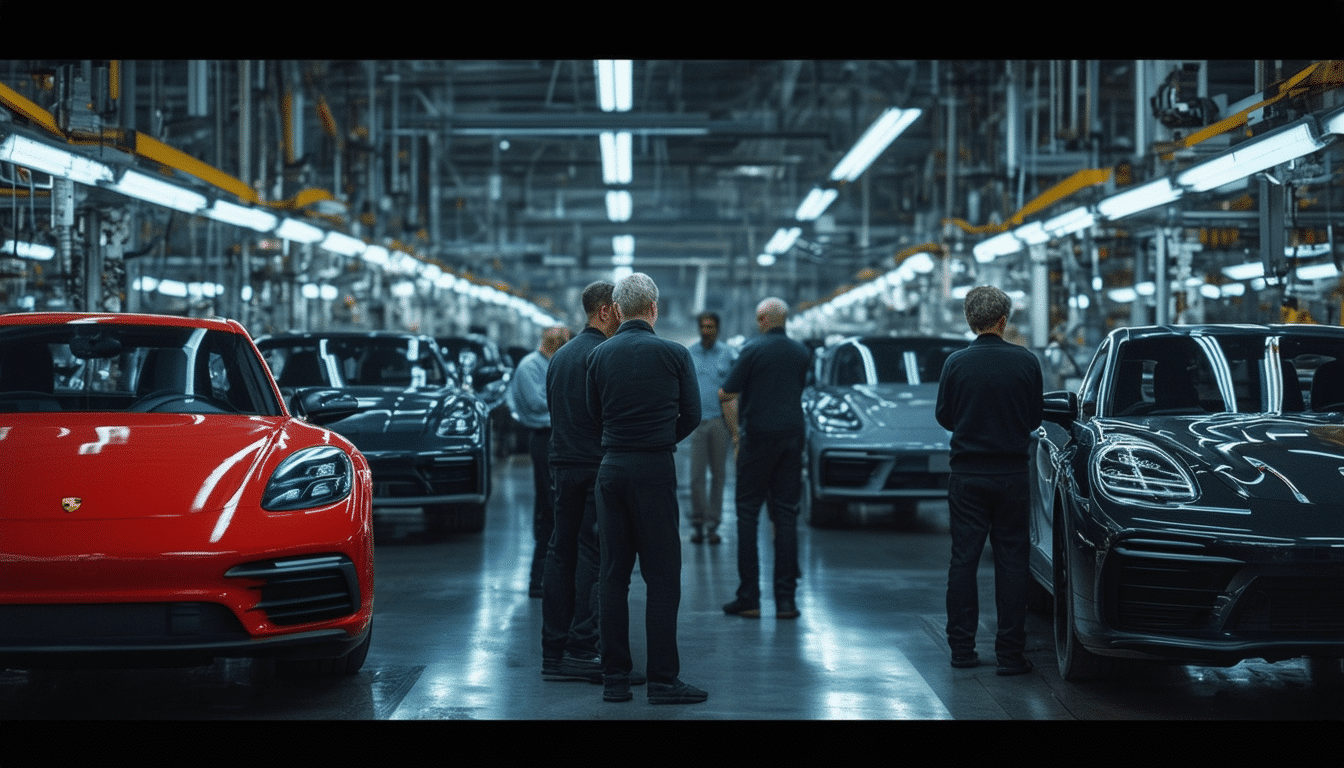The failure of Porsche’s electric strategy and the bet on China put 8,000 jobs at risk

Porsche, one of the most emblematic giants of the automotive industry, faces a perfect storm that threatens its future. As the electric strategy of the brand begins to crumble, sales results in China have dropped sharply, raising alarms about a possible significant labor impact. With up to 8,000 jobs at risk, the situation highlights the difficulties that traditional manufacturers face when adapting to an environment marked by electrification and fierce local competition. The combination of unmet expectations and a lack of competitiveness in the electric sector has led Porsche to a critical moment in its history.
Porsche, an iconic brand in the world of sports cars, finds itself at a crossroads with its ambitious electrification strategy and its bet on the Chinese market. Following the drop in sales, particularly in Asia, up to 8,000 jobs are at risk. This article delves into the details of this crisis, analyzing the potential impact on the workforce and the future strategic decisions of the company.
The current crisis of Porsche
In the business world, perception and reality often differ dramatically. Although Porsche tries to project an image of solidity, successive drops in its stock value are a clear indication of the concern felt by investors regarding its long-term strategy. As the world moves towards electrification, the brand faces one of the greatest challenges in its recent history.
Challenges in the Chinese market
China has traditionally been a promising market for Porsche, but the current situation reflects a radical change. In the first nine months of 2024, sales in China fell an astonishing 30%, with only 43,300 vehicles sold. This situation causes concern not only because of the numbers themselves, but also due to the trend indicating that if this continues, the annual total could be less than 60,000 vehicles, contrasting sharply with the 95,671 sold in 2021.
Local manufacturers are intensifying competition by offering electric vehicles at much more attractive prices, which calls into question the viability of Porsche models in this market. While a Porsche vehicle is priced between 70,000 and 80,000 euros, Chinese competitors offer equivalent alternatives at prices around 30,000 euros, creating an explosive imbalance in market terms.
Difficulties in Europe and the United States
Not only in China, the electric transition faces challenges in Europe and the United States. Models like the Taycan fail to capture the expected interest, while the launch of the electric Macan has been delayed, affecting its production plans. These issues are further compounded by the intention to electrify iconic models, such as the 718 Boxster and the Cayman, which face technical complications in integrating battery systems.
Internal reorganization and labor impact
Under market pressure, Porsche plans an internal restructuring. The possibility of moving the production of the Taycan to Leipzig opens a debate about the viability of the legendary 911, while, during this process, a difficult decision has been made not to renew up to 1,000 temporary contracts. This is just the tip of the iceberg, as it is estimated that up to 8,000 jobs could be threatened.
Reflections on the future: a return to internal combustion?
In the midst of this critical situation, reflections within the company occur regarding the need to delay electrification and consider extending the production of models with internal combustion engines. The possibility that models like the Cayenne and the Panamera continue on the market beyond 2030 with new versions is actively discussed, as well as a possible luxury SUV, the K1, which could offer traditional fuel variants.
As Porsche navigates these turbulent times, the intersection of its legacy, financial challenges, and the reality of the electric market presents itself as a complex and uncertain journey. This uncertain future raises critical questions not only about the company’s strategy, but also about the impact of those decisions on its employees and on the automotive industry as a whole.
- The harsh reality: Bentley halts electric vehicle production due to low acceptance among millionaires
- F1: McLaren in the spotlight to challenge Ferrari
- E-Moped 500 by Platum: The electric scooter inspired by the Fiat 500 e
- Jorge Martín: the change in mentality was key to achieving victory
- Unraveling the Deployment: The Persistent Problem of the Mercedes Engine that Deprived Aston Martin and Fernando Alonso of 160 HP in a Sea of Competition
The current crisis of Porsche and its labor impact
The situation facing Porsche today shows a clear divergence between ambition and the reality of the automotive market. With a strong emphasis on electrification, the brand had envisioned a bright future, but results are not only disappointing, they threaten the stability of the company. Sales in key markets, particularly in China, have plummeted, calling into question the viability of a strategy that was conceived as a pathway to leadership in electric mobility.
The fact that up to 8,000 jobs are at risk is a worrying symptom of the crisis the company is experiencing. This figure, which comes from internal sources within the organization, highlights the impact that a drop in sales can have not only on financial balance sheets but also on the lives and families that depend on the manufacturer. The fierce competition from local manufacturers in the electric sector is complicating Porsche’s recovery even further.
As competition offers similar electric models at lower prices, the brand faces constant pressure that may lead it to reconsider its approach to the future. The possibility of returning to internal combustion engines or radically revising its strategy points to a lack of clear direction in the face of a rapidly changing market.
On the other hand, it is critical for Porsche to analyze its strategic decisions and adapt to an environment that demands innovation and competitiveness. As the automotive industry moves towards electrification, the brand must find a balance between its sporting heritage and the challenges of the future to secure its market position and safeguard the jobs at stake.




